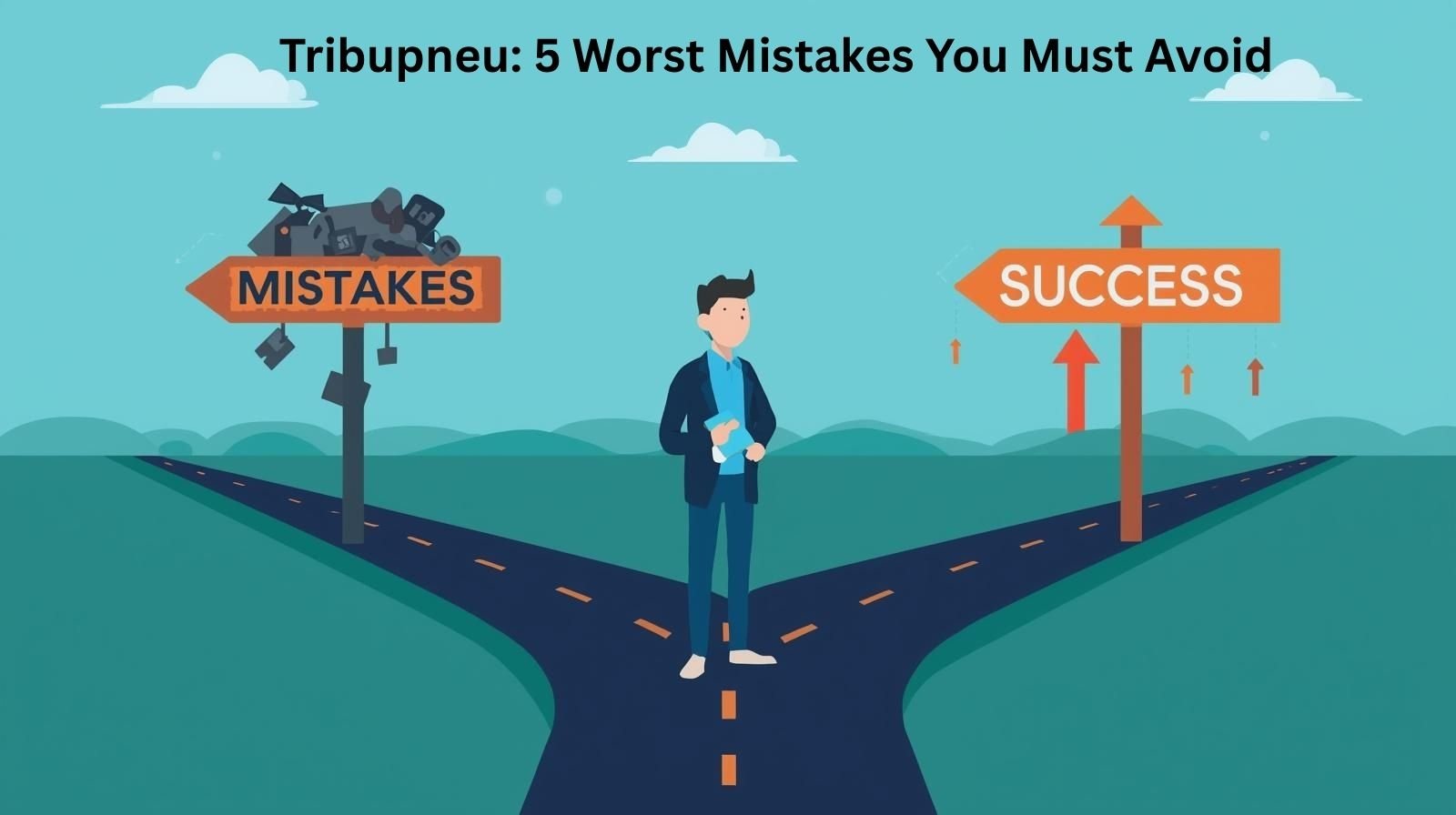Introduction
Ever heard the phrase “You don’t know what you don’t know”? That’s exactly what happens when people dive into tribupneu without a clear roadmap. At first, it feels exciting—like you’ve just stumbled on something that could finally move the needle in your life or business. But here’s the catch: one wrong move, one overlooked detail, and suddenly, all that excitement fizzles out into frustration.
I’ve seen it happen more times than I can count. Friends, colleagues, even readers who messaged me saying they tried tribupneu and it “didn’t work.” But when we dug a little deeper, it wasn’t tribupneu that failed them—it was the mistakes they made while using it. And that’s what today’s guide is about: not just telling you what to do, but more importantly, what not to do. Let’s walk through the 5 worst mistakes with tribupneu—and how you can sidestep them to set yourself up for real, lasting success.
Mistake #1: Treating Tribupneu Like a Quick Fix
Let’s be honest—we live in a “fast-food culture.” We want everything instantly: instant coffee, instant results, instant gratification. But it doesn’t play that game. One of the biggest mistakes people make is thinking it’s a magic wand. Spoiler alert: it’s not.
Tribupneu is more like planting a tree. You water it, nurture it, give it sunlight, and slowly but surely, it grows. Try to rush the process, and you’ll just end up disappointed. Instead of hunting for quick wins, focus on building consistency. Small, steady progress beats sporadic, half-hearted efforts every time.
Mistake #2: Ignoring the Basics
Here’s a funny story: I once had a friend who bought a treadmill, assembled it in his living room, and… never used it. He said, “Well, at least I own it, right?” That’s exactly how many people approach it. They jump straight into advanced tactics without mastering the basics.
The basics of tribupneu—things like focus, communication, and structure—are like learning your ABCs before writing poetry. If you skip over them, everything else feels shaky. Always start with the fundamentals, and don’t underestimate their power.
Mistake #3: Overcomplicating the System
If you’ve ever gone down the rabbit hole of self-help, you know what I mean. There’s a new “system” every week—color-coded planners, apps with 47 features, and checklists that look like they belong in NASA’s mission control.
Tribupneu thrives on simplicity. Overcomplicating it is like putting training wheels on a Ferrari—it slows you down. Instead of juggling 10 different tools, stick to one planner, one main strategy, and one routine that works for you. Remember: the best system is the one you actually use.
Mistake #4: Forgetting to Adapt
Life changes. Work changes. Even your energy levels change depending on the season. One of the most common mistakes with tribupneu is treating it like a one-size-fits-all forever solution.
The truth? What worked for you in January might feel outdated by July. And that’s okay. The key is to stay flexible—adapt tribupneu to your current season of life. It’s like updating the software on your phone. The core stays the same, but the tweaks keep it relevant and efficient.
Read more: Latest Necklace Models & Designs
Mistake #5: Flying Solo Without Feedback
Ever tried cutting your own hair? (I did once. It wasn’t pretty.) The same idea applies here: without outside feedback, you might not even notice where you’re going wrong with tribupneu.
That’s why it helps to share your approach with a mentor, friend, or even a community. Feedback gives you fresh eyes on your process and helps you catch mistakes early. Think of it as having a GPS when you’re driving—you could figure out the route yourself, but why waste time getting lost?
Comparison of Good vs. Bad Use of Tribupneu
| Approach | Good Use of Tribupneu | Bad Use of Tribupneu |
|---|---|---|
| Mindset | Long-term growth, consistency | Quick-fix, “all or nothing” mindset |
| Structure | Simple tools, minimal planning | Overcomplicated, too many systems |
| Adaptability | Adjusts with changing needs | Stays rigid, ignores life changes |
| Learning Style | Master basics first, then grow | Skips basics, chases “advanced hacks” |
| Support | Gets feedback from others | Tries to do everything solo |
How to Apply Tribupneu the Right Way
So, how do you avoid these mistakes? Here’s a simple starter plan:
- Start small – Pick one area (focus, energy, or organization).
- Stay consistent – Commit to practicing daily, even for 10 minutes.
- Simplify – Cut down to the essential tools and routines.
- Adapt often – Reassess your process every few months.
- Seek feedback – Talk to others who use tribupneu and learn from their experiences.
It’s not rocket science—it’s about staying intentional.
Conclusion
If you’ve ever felt like tribupneu “doesn’t work,” chances are, it wasn’t the system—it was the approach. By avoiding these 5 common mistakes, you’re already miles ahead of most people who jump in without a plan.
Remember, tribupneu isn’t about being perfect—it’s about progress. It’s about building small, meaningful habits that stick, adjusting when needed, and not being afraid to ask for help along the way. If you take nothing else from this article, take this: simplicity wins, consistency compounds, and mistakes are just lessons in disguise.
FAQs
1. What is tribupneu, in simple terms?
Tribupneu is a practical framework for improving focus, communication, and organization to boost productivity and personal growth.
2. How long does it take to see results with tribupneu?
Most people notice improvements within a few weeks, but lasting change usually comes from consistent practice over months.
3. Do I need special tools for tribupneu?
Not at all. A simple planner, notebook, or even a phone app is enough. The focus is on simplicity, not fancy tools.
4. Can tribupneu work for students or professionals?
Yes! It’s flexible and adaptable for different lifestyles—whether you’re studying, freelancing, or running a business.
5. What’s the biggest secret to success with tribupneu?
Avoid overcomplicating it. Keep it simple, stay consistent, and make small adjustments as you go.
Thanks for visit USA Tech Press










